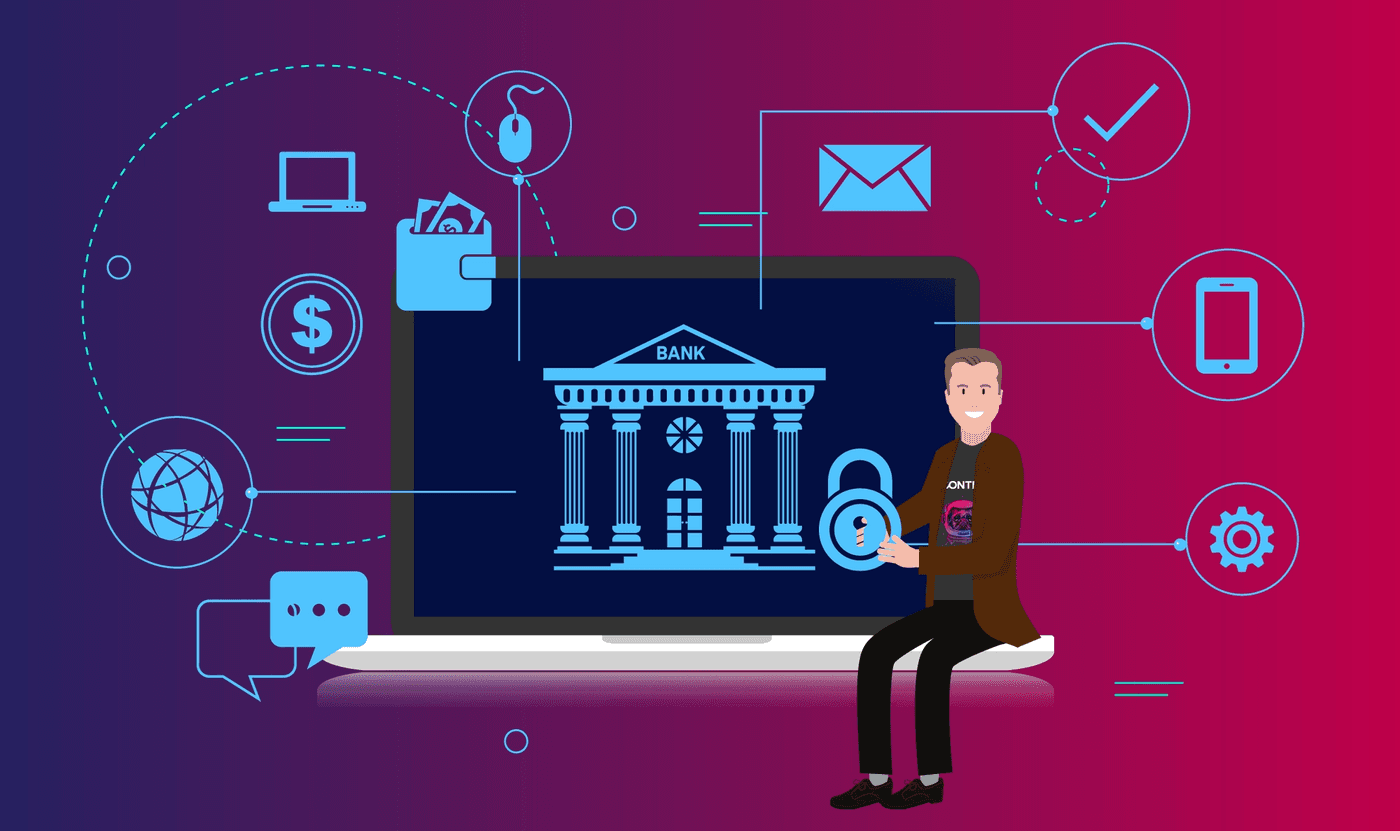The Role of the Consumer Data Right in Today’s World
The consumer data right (CDR), or open banking, has transformed how banks offer products and services across the world.
By democratising data through information sharing, the CDR has levelled the playing field for competitors and new digital-first banks entering the market.
Suddenly, customers can access information that enables better decision-making when purchasing products and services, allowing them to easily switch between service providers.
Globally, open banking is at varying stages of implementation; countries like the UK already have a comprehensive open banking program with the Second Payment Services Directive (PSD2). In fact, more UK financial institutions have increased spending on open banking initiatives than any other European nation in 2020, compared with 2019. Conversely, Singapore has opted for an organic transition to open banking rather than enforcing set regulatory deadlines.
In Australia, the CDR was first rolled out in the banking sector in July 2020—disrupting the industry and giving consumers more control over their data.
Regardless of the industry, the CDR is set to play a critical role in digital transformation, while creating a more competitive marketplace and improving the overall customer experience.
But what does CDR mean for Australian businesses and what role will open banking play more widely in digital transformation? In this blog, we’ll cover what CDR is, the challenges of CDR in banking and beyond, how it can help and finally how to ensure its success.
What Is CDR?
The Australian Government announced the introduction of a consumer data right (CDR) in Australia back in November 2017.
According to the lead CDR regulator, the Australian Competition & Consumer Commission (ACCC):
“The CDR will give consumers greater access to and control over their data. It will improve consumers’ ability to compare and switch between products and services, and will encourage competition between service providers, leading not only to better prices for customers but also more innovative products and services.”
The CDR kicked off in Australia on July 1, 2020, with more complex data sets, like mortgage and personal loan data now available on the scheme. New Zealand has since also commenced its open banking journey and is currently exploring options for establishing a CDR initiative in-market.
The disruption created by CDR will not be confined to the banking sector alone. It will eventually be rolled out for other industries such as utilities and telecommunications. The Australian government has already committed to spending $45 million over four years to ensure that the CDR will be enforced appropriately throughout the country. An additional $20 million was provided for further development for CDR late 2020, with another $111.3 million dollars announced in the Australian Federal Budget in May 2021 to accelerate the rollout of the CDR in banking, energy and telecommunications.
Meeting the Challenges of CDR
Open banking has a clear objective: to bring greater competition and security to the payments market, by giving customers safer ways to share their data with third parties.
In this way, consumers will have a more holistic view of their financial behaviour, making it easier to manage and control their finances.
In practice, the CDR journey presents a number of obstacles for institutions. While an opportunity for banks to innovate, collaborate and improve the customer experience, the CDR creates challenges in the form of data management and privacy, consent management, competition and increased pressure to evolve infrastructure to meet regulatory demands.
In addition, industry bodies in Australia have questioned who should oversee the CDR initiative, suggesting oversight should shift away from the Australian Competition and Consumer Commission and to an independent agency.
These challenges were only compounded by a global pandemic which has created new service demands from customers, forcing organisations to streamline customer interactions and create innovative ways to meet customer demand. As a result, businesses have had to rapidly shift to remote working models, placing huge strain on existing systems and infrastructure. Businesses have had to accelerate their efforts, turning years worth of work around in the space of three short months. The amount of focus on digital transformation on the overall business has significantly increased. Check out our CTO Crisis Survival Guide for tips on how to adapt your transformation program to unforeseeable disruption.
Since open banking was first introduced in Australia, both business and consumer needs have changed rapidly. The question to ask now: How can this concept meet current business challenges and ensure organisations are prepared for the future?
How the CDR Can Help Relieve Pressures on Consumers and Organisations
With or without the added pressure of a pandemic, customer requests have already started becoming more complex, requiring bespoke services and advice from organisations. The information sharing achieved through CDR is the key to streamlining customer interactions and creating innovative ways to give customers what they want.
Once implemented, CDR will help set the framework for services that can be used to arm Australians with more personalised financial advice, streamline requests like loan approvals and payments deferrals. Individual circumstances become even more important during times of economic uncertainty.
For example, the Australian government’s COVID-19 early release of the super scheme has played a pivotal role in relieving financial pressure quickly. However, the government has received criticism for how the consequences of withdrawing super have been communicated.
In a post-CDR world, Australians can benefit from personalised information—taking into account their age, income and other financial details as they decide on when to withdraw their super.
What Does the Success of CDR Depend On?
As with any large-scale transformation, end-user benefits take time to be realised. First, the CDR, along with the necessary infrastructure to innovate and improve the customer experience must be successfully implemented.
Consumer Education
The other key consideration is consumer education. While CDR and open banking have been spoken about at length by those in the industry, the reality is many consumers still do not fully understand how open banking works.
A survey conducted late last year of 1,000 Australians found more than three-quarters did not know what open banking is. This lack of education means that consumers still worry about issues such as data security and costs.
Despite implementation beginning in 2018, lack of awareness is still a key challenge for more mature markets like the UK. The industry and consumers are unlikely to fully reap the benefits of CDR until there is widespread understanding of what it is and its value to the customer experience.
Building a Digital Marketplace
Until it is rolled out across other sectors such as energy and telecommunications, we are unable to fully realise the potential that CDR offers. At that stage, CDR will create opportunities for providers—whether of financial, telco or energy products services to aggregate data, products and services from competitors and even other industries, essentially creating a digital marketplace.
The CDR is the catalyst for this marketplace, shifting organisations away from traditional banking methods of providing generic products and services to a marketplace banking model. This means that a post-CDR bank will help manage your finances through partnerships with third parties, such as FinTechs and neobanks instead of simply selling unnecessarily. Banks will essentially become service providers of sorts and customer channels will likely fall to market aggregators, unless the banks invest heavily into their customer experience offerings.
The bank will need to aggregate the best products and services from its competitors and provide customers with a bespoke solution. Now imagine if your bank is integrated with your telco, electricity and gas providers, super fund, insurer, and entertainment services – you can access and use all of these services from the one interface or platform. These are the “marketplace” opportunities created and driven by CDR.
Top 20 Digital Transformation Innovators: Europe 2021
What are the secrets to a successful digital transformation?
Hear from the experts at O2, The Football Association, Nationwide, Sainsbury's, Credit Suisse, Transport for London, Government Digital Service, Ocado, BNP Paribas and more!
How the CDR Can Drive Innovation and Digital Transformation in Banking
Compliance is still a key concern for many banks during the CDR roll-out and beyond. With most major banks built on technologies that are decades old, legacy infrastructure is an obvious roadblock.
The CDR presents a clean slate to build on top of core services and drive digital transformation in the banking sector. Forward-thinking banks are approaching the CDR as an opportunity to innovate and strategically modernise the tech stack.
Embrace the Public Cloud to Accelerate CDR Compliance
For instance, as banks start realising the benefits of becoming increasingly digital, they are able to leverage the capabilities of the public cloud to initially accelerate CDR compliance. In the long run, this helps to transform business models because cloud-hosted platforms enable banks to get their solutions to market faster, while being inherently more scalable, robust, secure, and far easier to iterate than anything delivered by a traditional data centre infrastructure.
We have helped many of our customers, like EDF and Origin Energy, to adopt a cloud native approach and migrate to the cloud. This leads to significantly faster, safer, and more cost-efficient roll-out of new features.
Adopt a Modern Operating Model to Support Move to Open Banking
As a consultancy that works with many of the big banks in Australia and globally, we are also seeing a connection between open banking and banks adopting a modern enterprise cloud operating model and new ways of working such as Enterprise DevOps / SRE. By breaking down silos traditionally found between software development and IT teams and adopting a collaborative approach, banks will benefit from faster software updates, the ability to solve critical issues quickly and achieve agile ways of working. Ultimately, this approach creates a data-centric culture which improves business productivity and helps guide key business decisions.
Creating a Competitive Landscape
It’s no secret the CDR presents both challenges and opportunities for FinTechs and incumbents. The CDR encourages competition between service providers. This means customers now have the power of choice on how to bank, which will lead to better prices and also more innovative products and services from the FSI players.
For the Australian consumer, switching providers will become easy. FinTechs will be able to win and onboard customers from traditional banks more quickly, potentially speeding up these players’ capture of market share. Smaller banks do have the advantage as incumbents have to give up elements of those precious data assets. On the flip side, the costs associated with the open banking regime may create roadblocks for FinTechs with smaller pockets.
CDR is the way forward. Incumbents need to be willing to be disruptive or risk becoming utilities that only provide money-moving rails alone. Whether bank or FinTech, the winners at the end of the day will be those that use CDR to offer new customer-centric, competitive, profit-generating products and services that customers value.








